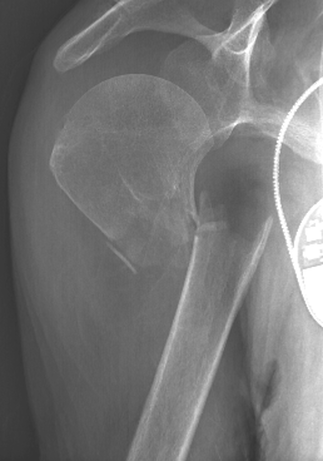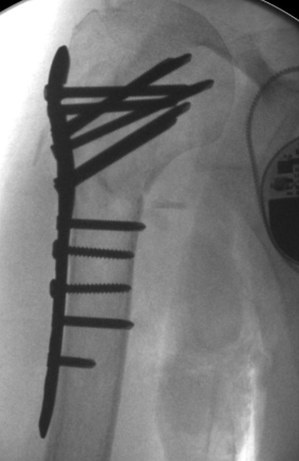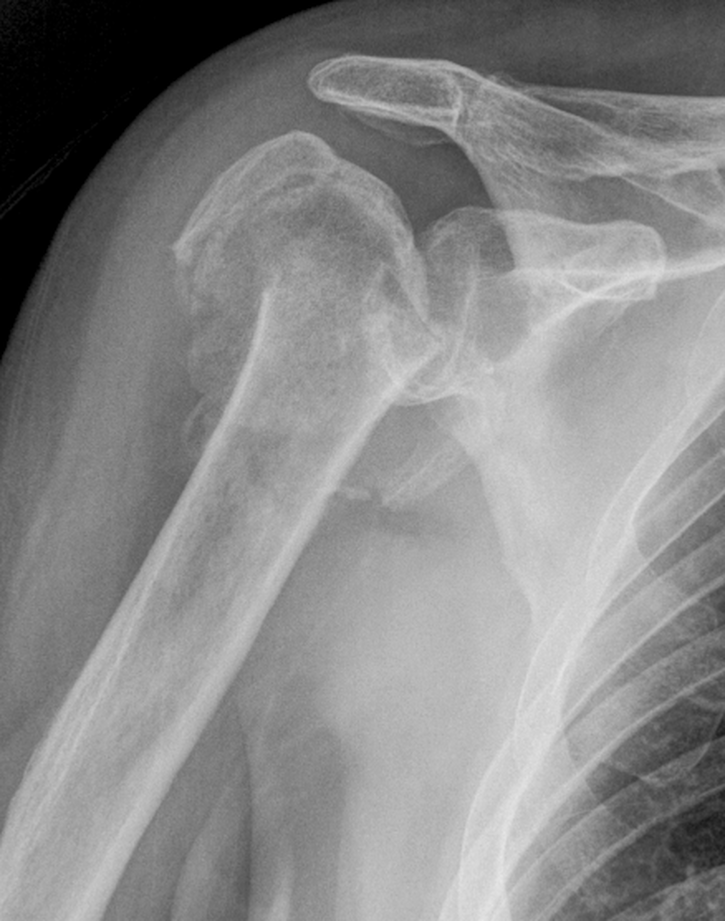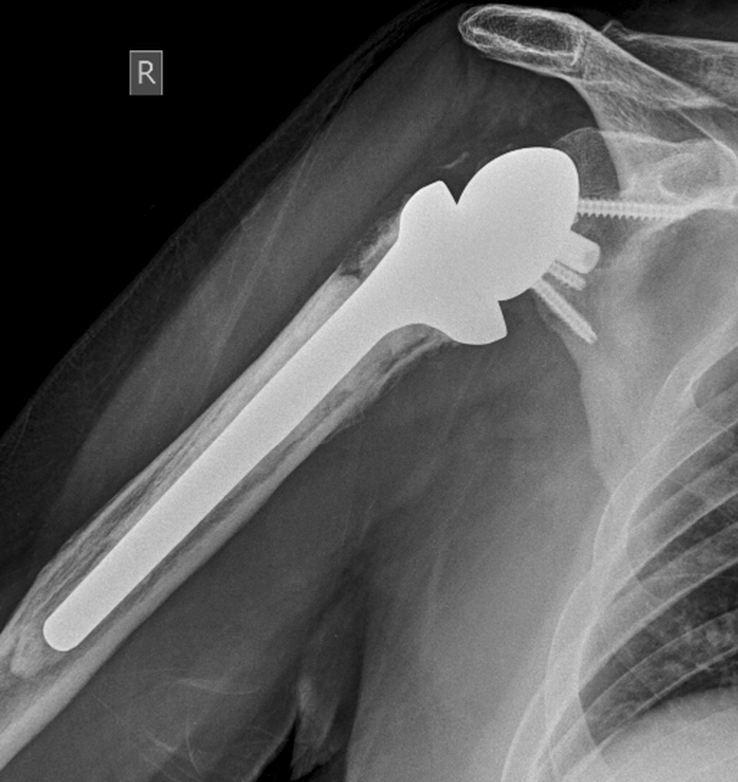As age related osteoporosis continues to occur, orthopaedic surgeons keep looking for ways to reduce the impact for patients.
Fractures around the shoulder have many options – surprisingly, just putting it back together isn’t necessarily the best option. Years ago – Zyto demonstrated that internal fixation of complex fractures have a high complication rate, and the result at a year was no better than if no surgery had been done. However – if rigid and reliable fixation can be achieved, then an early return to function is possible.


This case uses a modern locking plate. The screws are locked to the plate with a thread within the screw head. By preventing toggling against the plate, the construct is stronger and less likely to fail.

In the elderly, sometimes the fracture is so bad it cannot be repaired. Reverse shoulder replacement solves the problem caused by the rotator cuff tendons no longer functioning. Replacing the shoulder blade socket with a ball, and putting a socket on the humerus, allows the bigger deltoid muscle is able to function effectively without the smaller rotator cuff. This style of operation is approaching 20 years of clinical results, but only the last 10 years or so in this country for trauma.

Reference:
Zyto K, Ahrengart L, Sperber A, et al.
Treatment of displaced proximal humeral fractures in elderly patients.
J Bone Joint Surg Br (England), May 1997, 79(3) p412-7
Mr David Mitchell
